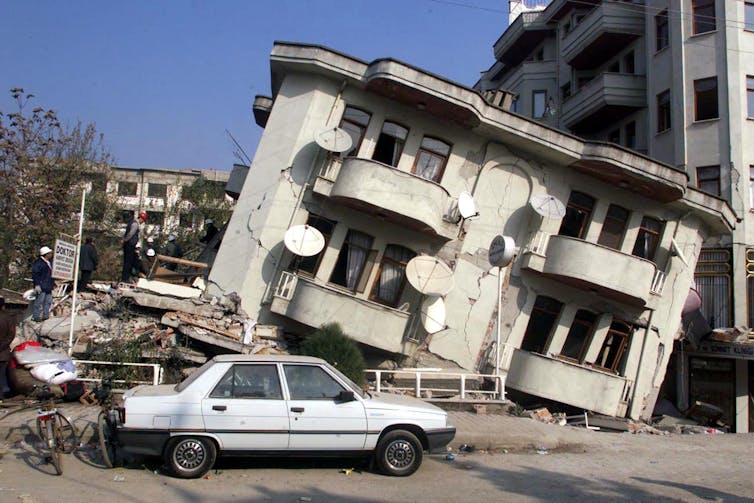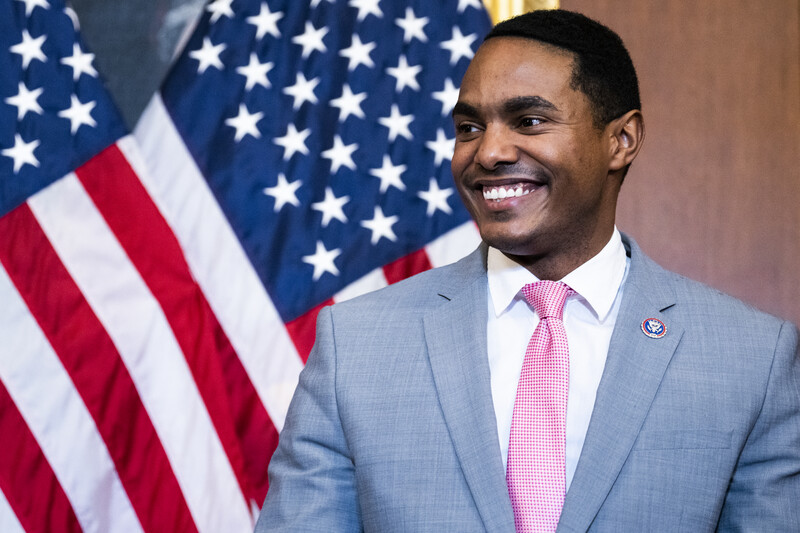I’m looking at this Rage Against The War Machine rally that is being organized by the Libertarian Party and I am genuinely confused about how folks on the left are involved in this at all. Oh, I understand the need to revive and mobilize a strong not just anti-war movement, but an anti–imperialist and people-centered human rights movement, so sure, sometimes we’re going to have to organize with people we don’t agree 100% on everything with. But THESE people?
And look, on the surface, if one would look at the list of demands on the Rage Against The War Machine webpage - and I do take offense at their play on the name of the band Rage Against The Machine - one easily agrees with not sending one more penny to Ukraine, to slashing the Pentagon budget, to abolishing war and empire, to disbanding NATO, and to freeing Julian Assange, among others reasonable sounding demands and think, “Well this is great, I agree with all of these things, so of course I’ll support/align with them!”
But, if you compare those nice-sounding words to the actual ideology of today’s Libertarian Party, and particularly of the Mises Caucus that has gained control of it, something starts to smell funny. So let me hip you to who these people are and why I’m now calling this and the support from too many white so-called leftists in the anti-war movement, #AntiWarSoWhite.
Back in May of 2022 Reason Magazine published an article examining the takeover of the Libertarian Party by the Mises Caucus which happened when the Caucus got their candidate Angela McCardle elected to chair the national party with 69% of the voting delegates. The article points out that while McArdle was the Mises Caucus candidate, the behind-the-scenes mastermind of its victory was caucus founder and leader Michael Heise.
The caucus's official platform is typical libertarian stuff - personal liberty, little to no federal government oversight or no federal government for that matter, no “unconstitutional” war, no federal regulation on guns, the primacy of private property - which has always screamed capitalist greed and a host of other problems including racism, since racists have taken the libertarian creed of freedom to associate with no federal oversight on freedom to exclude people of color. But the key to understanding the danger of the Mises Caucus isn’t in what their platform says; it is in what their members have said and have done. Because even old-guard libertarians say that too many of the Caucus members are obnoxious bullies, and are also often racist.
The Reason Magazine article cites the example of the New Hampshire L.P., a powerful vector of Mises Caucus messaging, tweeting on Martin Luther King Day that "Black people in America get special access to essential drugs, receive special federal funding due to race, and are first-in-line for every college and every job. America isn't in debt to black people. If anything it's the other way around."
Aside from the assertions that Black people get preferential anything in this country being typical racist drivel and patently false, the racist imaginary grievances were a response to Nicole Hannah Jones tweeting not her sentiments, but the words of Dr. Martin Luthe King, Jr. when he said in the oft miscontextualized “I Have A Dream” speech: “It is obvious today that America has defaulted on this promissory note insofar as her citizens of color are concerned. Instead of honoring this sacred obligation, America has given the Negro a bad check, a check which has come back marked 'insufficient funds…” But sure, we get preferential essential drug and job and college admittance treatment at a time when economic inequality between Black and white persists , with whatever meager gains the so-called Black middle class has achieved not translating to increased economic stability for the Black masses, and all Black households are far behind white households in income and assets, including the much-celebrated Black petit bourgeoisie.
Then there’s the influential member of the Caucus Jeremy Kauffman who tweeted that transgender people should be killed to achieve a more moral world, as long as it doesn’t incur additional taxes. These tweets were deleted after pressure to do so, but you know twitter is forever and thank goodness it is so that we have evidence to back up the reasons for actual leftists to steer clear of these #AntiWarSoWhite people.
Let Mises Caucus Libertarians tell it, though, they are merely carrying on Ron Paul’s Revolution. But more evidence of their true ideology can be seen when they succeeded in deleting the line from the Libertarian Party’s long-time platform plank condemning bigotry as “irrational and repugnant.” Heise says that the anti-bigotry condemnation fed what he called a "woke," or "cultural Marxist" agenda. He said, "What is happening nowadays with the 'wokeism' is people are using language as dialectics along cultural lines to push for collectivist ends," says Heise. "So back in the day…the Marxist revolutions, they had the dialectics of the rich versus the poor and the owner versus the worker. And they were pushing towards collectivist ends. It's the same ideology that's happening now, but they're pitting cis versus straight and male versus female and trans versus whatever." Look at that, it’s the old communist gay/trans collectivist agenda trope!
And although they added a new line stating in their party’s plank stating that the party would "uphold and defend the rights of every person, regardless of their race, ethnicity, or any other aspect of their identity," it hard to see how that can be done when the Mises Caucus is shaping the L.P. environment to drown out discussions about people’s identity and how policies impact them differently from the majority. Amazing how allegedly freedom-loving Libertarians sound hauntingly like rights-stripping bigoted Republicans.
Then there’s the fact that The Mises Caucus also succeeded in removing the party's pro-choice plank, which McArdle said was called for because abortion represents "an irreconcilable difference" within the libertarian movement and they didn’t want to keep alienating Trump and socially conservative voters. "We tend to push out people who are a little bit more socially conservative," says McArdle. "And I think that there's room in the party for people who are libertine and socially conservative. And I would like them to feel that way."
Let me get this straight…there’s enough room in the party to protect women’s right to privacy and bodily autonomy and enough room for the people who want to take it away from them? What’s the floor plan in that big tent look like because I’m not seeing how you arrange enough room for both. You’re going to inevitably drive one group out, and that will always be the group that feels threatened, that IS threatened, by the other.
And old guard Libertarians agree, which is why many of them have been very vocal in their opposition to the Mises Caucus and its takeover of the L.P. One old-guard Libertarian elected official who quit her post in protest to the Mises Caucus takeover in New Hampshire said, "...we are a big tent party, but no tent is big enough to hold racists and people of color, transphobes and trans people, bigots and their victims.."
If a Libertarian can understand that there is no unity to be had between people who are fighting for their rights and people who want to deny them, what is wrong with so-called white Leftists who don’t get this? I know the answer, but I’ll get to that in a minute, because there is more to consider when examining why this #AntiWarSoWhite rally is such a problem.
There’s the fact that if the Libertarian Party and anyone else who sponsored and organized this event were serious about building the “anti-war movement,” why didn’t they reach out to the very visible and very active Black, Brown, and Indigenous-led anti-imperialist organizations and invite their representatives to speak? As many white leftists, or at least anti-war activists, are really dollar store Latte Leftists peddling vapid and narrow anti-war rhetoric without actually dealing with imperialism have told me, “...we all need to come together to stop this war in Ukraine because it presents an existential crisis for all of us!! ALL OF US WILL DIE FROM NUCLEAR WAAAARRRRR!!!!” they scream.
True enough. But considering the people most impacted by US imperialism and imperialist war have been organizing against it long before these Mises people came along, why haven’t I seen most of these white Latte Leftists engaged in organizing with us? I mean, Black, queer, trans, disabled, Global South, African people will certainly all die should there be a nuclear war, so why not include representatives of ALL OF THE PEOPLE who would be impacted if this war is not stopped on your platform?
And the organizers of this rally didn’t even have to reach out to real anti-imperialist, anti-capitalist organizations like the Black Alliance for Peace or ANSWER Coalition or the like. They could have been less obviously racist had they reached out to even a liberal formation like the Poor People’s Campaign.
But nope! The organizers looked at their speaker’s lineup and nobody said, “Dang this is mighty white up in here we need to get some legit Black anti-war speakers and really build a solid anti-war coalition.” But since that’s not who they want to build their base with, they didn’t.
And I’m not making this up. The new Mises Caucus-backed chair of the L.P. McArdle made it clear who the party wants to grow their base with in another Reason Magazine article where she says, “Mises Caucus supporters say they want to ‘make the Libertarian Party libertarian again,’ that it should no longer be concerned about offending progressives or Beltway types and shouldn't be afraid to reach out to the coalition that elected former President Donald Trump.” That’s right, their bold action to rejuvenate the Libertarian Party is not to reach out to the anti-imperialist, anti-capitalist (they would never because private-property-loving Libertarians are NOT anti-capitalists) formations and activists, but to the right and alt-right young podcast edgelord personality-loving Trump voter. And to get unprincipled white Latte Leftists to give them public legitimacy by speaking at their opportunistic recruitment event they call an anti-war rally, or course, which too many are happy to oblige.
And despite how much some of the speakers now publicly whine about some others backing out because they succumbed to “the woke mob” or favored an LGBTQ+ agenda over participating in their little #AntiWarSoWhite rally, the truth is that people probably hadn’t looked into what the Libertarian Party has become with the Mises Caucus now leading it, and when they found out decided it wasn’t worth damaging their formations’ reputation associating with them, and ultimately decided that betraying the marginalized people within their formations and coalitions was also not worth the limited visibility their participation would have given them. Especially when you factor in that for the Libertarian Party, the purpose of this rally is really to seize the political moment to raise their flailing political party’s profile and gain some legitimacy from the speakers they invited.
Because it is worth noting that the money is drying up for the Libertarian Party because of this rightward shift the Caucus has created. Long-time significant donors to the L.P. have said that the Mises turn made them stop funding L.P. candidates. At the time the Reason article was published in March 2022, the number of active donors to the LP including several major ones, had been falling for seven straight months following the four-year battle for control of the party between the old-guard Libertarians and the Mises Caucus. And now that the Mises Caucus has won, this rally is part of their strategy to win and expand their party’s political power.
And here I have to go back to the folks who choose still after all that has come to light about the Libertarian Party and the Mises Caucus. I wonder if they are asking themselves what the Mises Caucus-led Libertarian Party will do with the political power they win if they are able to cash in on the legitimacy they are looking for with this event. And if they are asking themselves that, who do they think they would wield that political power against?
Of course, they will use that power against the people they have already told us with their own words and actions that they want to use it against, to disenfranchise the marginalized the way the GOP that they are actively courting to grow their ranks are already attacking. The Libertarian Party under Mises Caucus control will help the GOP do it, and what will these white Latte Leftists do then? Despite the delusional assurances of some who have engaged me, they will not change the minds of these people because the L.P. is not interested in changing their ideology. And these white Latte Leftists are not demanding that they do.
Among many of the white alleged leftists who challenged my analysis of this L.P.-backed #AntiWarSoWhite rally, I seem to recall none of them engaging with other anti-imperialist groups for nationwide protests against a potential war in Ukraine as far back as the beginning of February 2022. Facebook reminded me that I was at such a rally. You see, we anti-imperialists have been protesting imperialism, war, and THIS war in particular for quite some time, even before this war with Russia using Ukraine began. We saw it coming and were protesting against the possibility, if not the inevitability of the US/EU/NATO coalition pushing it. But let these alleged white veterans of the anti-war movement tell it, a real powerful anti-war coalition couldn’t have been built until the L.P. rally came along, so if we value our lives we’d better hop on that bandwagon.
The truth is, however, that if they ever valued our lives, they would have been organizing with us all along, but too many white so-called anti-war veterans have not been, and that’s why much of what is considered the anti-war movement - as much of it as there is left - is also an #AntiWarSoWhite formation.
Because I must point out that much of this discourse around defending these bigots and transphobes in the new Libertarian Party among white anti-war veterans looks, sounds, and feels like plain ol’ liberal racism, where the allegedly nice white people gaslight us for pointing out that the people they want to do business with would just as soon see us wiped out, so we cannot - for our own safety and that of our comrades - align with those forces and people. In response, the allegedly nice white people dismiss our concerns, tell us that we’re making too much of nothing like we always do, and that we’re the reason no change can happen because we don’t want to work with anybody. We’re too stuck on “ideological purity” or worse, “identity politics” rather than building a broad coalition. That’s racist gaslighting y’all and there is really no other way to call that. Especially when they try to support their flimsy arguments against us by using quotes by Frederick Douglass or the example of the original Rainbow Coalition led by the Black Panther Party to prove to us that we should unite with racist white people. Except that they, once again, remove all context from their examples, and have not done anything close to what those freedom fighters did to challenge racist domination. Hell, these white leftists won’t even ADMIT that the folks organizing this rally have a bigotry problem, let alone require them to repudiate it as the Black Panther Party did with the members of the Young Patriots who may have been racist, as Frederick Douglass did in challenging the system of white supremacist domination. No, these white Latte Leftists are not making ANY demands of the organizers of this event for their party’s bigotry and that of some of the speakers aligned with their party, but they are making all the demands of US to capitulate to them, So the misuse of our own history against us is an additional racist insult committed by the #AntiWarSoWhite crowd on the so-called left.
Further, there is also the very uncomfortable truth that too many white people on the so-called left do not want to be in coalition with people who aren’t like them. They don’t want to have to deal with conversations about their racism and white supremacist tendencies, their patriarchy, their homophobia and transphobia, their ableism, their superior attitude as if they know All Things Organizing, and their resistance to being led by nonwhite non-men. They want to organize with people who only want to talk about how war and maybe capitalism affect our class as a whole, but they do not want to talk about the additional oppressions that are heaped on those of our class because of their race, gender, sexual orientation, disability, etc. There, I said it out loud for you - too many so-called white people on the so-called left who claim to be anti-war do not want to be led by people of color because they’re tired of talking about racism, and they want to continue to call the shots.
And look where that’s gotten us, a bunch of people who claim to be anti-war activists tripping over themselves to give a bunch of bigots legitimacy because western chauvinism and American exceptionalism has them really believing that a movement ain’t right unless it’s led by whites. The resistance to focusing the anti-war effort on the people who are and always have been most impacted by imperialist warmongering is something they refuse to confront, struggle with and overcome. So they don’t want a real anti-imperialist coalition, they want their own #AntiWarSoWhite movement.
My observations here are less of a condemnation of any of these groups - organizers or participants - and more an honest analysis of the factors that lead me to see this Rage Against The War Machine rally of the L.P. as a dangerous distraction from true anti-imperialist coalition building and organizing. People and formations must make decisions about who they align with based on their own principles of unity and shared interests, but there should also be principles of solidarity with the most marginalized to bring no harm to them with the alliances we make.
I just know that the interests of the working class, poor, oppressed, and colonized people who are marginalized additionally by racial oppression, gender oppression, ableist exclusion and other intersectional points of struggle are not served by aligning with people who would continue those oppressions should they ever win enough power to be able to do it.
We cannot afford to lend those groups legitimacy now, only so they can win the power to use it against us later. It is a grave betrayal of our humanity to demand that we do.
Jacqueline Luqman is a radical activist based in Washington, D.C.; as well as co-founder of Luqman Nation , an independent Black media outlet that can be found on YouTube (here and here ) and on Facebook ; and co-host of Radio Sputnik’s “By Any Means Necessary” .













